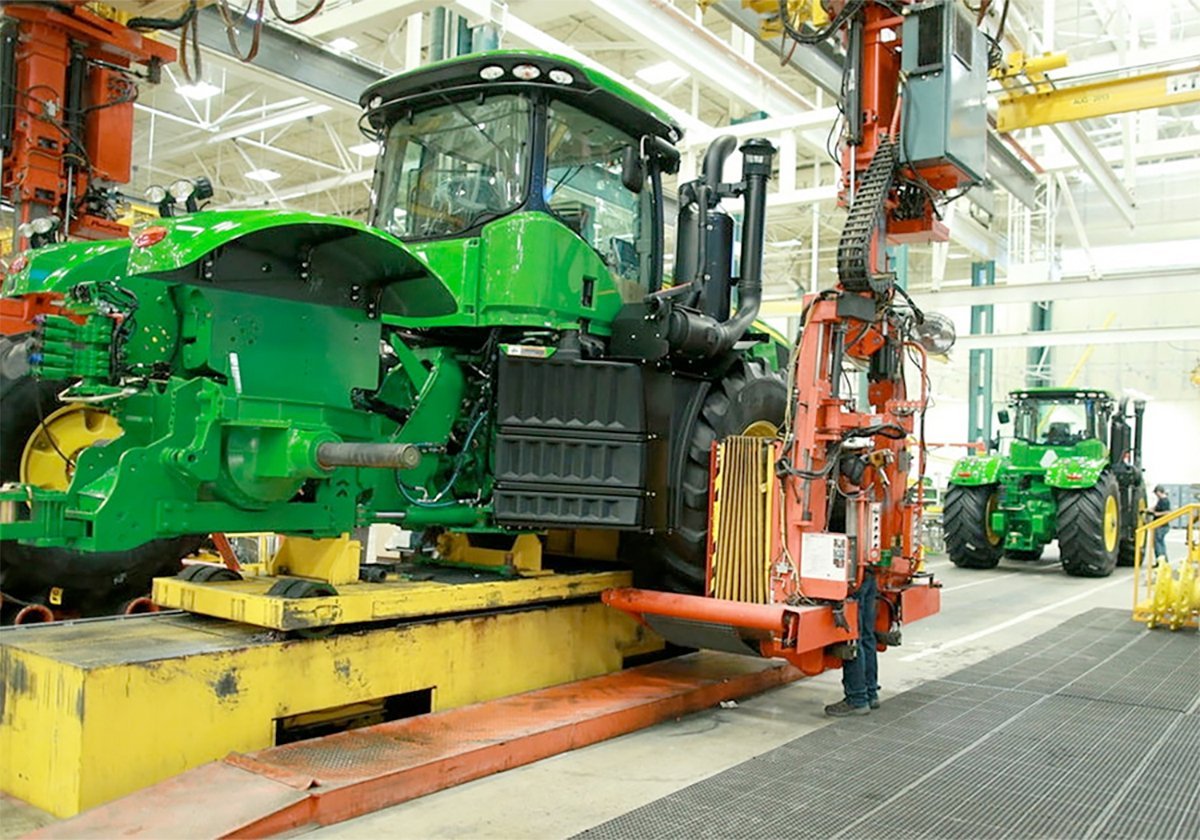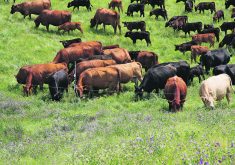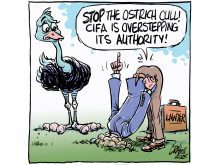Worm problems
In the May 8 issue Evelyn Johnson writes concerning the damage earthworms have done to her gardens. She is not alone in that respect, as the same thing happened to mine.
I had a beautiful garden, topsoil pushed off from the building of a road, with manure and peat moss worked in.
I had read Malabar Farm, by Louis Bromfield, in which he extols the virtues of the earthworm, so I was thrilled when some plants I acquired from a friend contained them.
Read Also

Trump’s trade policies take their toll on Canadian producers
U.S. trade policy as dictated by president Donald Trump is hurting Canadian farmers in a multitude of ways.
Within three or four years the garden soil was like slimy concrete, with holes like Swiss cheese.
The last year I used my garden, we rooted the potatoes out with a backhoe, as it took tremendous effort with a garden fork.
I fight an ongoing battle in my flower beds, as I continually have to incorporate manure, peat moss, etc., into them to keep them growing things half decent.
I suppose they must be beneficial in some areas, but certainly not in the soil here.
A couple years ago, I was in a greenhouse in Fort St. John. I asked the lady in charge what I could use to eradicate earthworms, and she virtually hit the roof. She said, “You don’t want to get rid of them, they’re very good for your soil.” I generously donated all of mine to her, but to date she hasn’t come to round them up.
– Shirley Fell,
Dawson Creek, B.C.
Can’t monitor
Re: “When safe?” (WP, May 1.)
Genetically modified food advocate Crystal Wallin, a recent product of the University of Saskatchewan sociology of biotechnology program, asks the question: “How long will it take before (GM crops) are deemed safe?”
The answer is simple: After they have undergone independent, chronic, long-term testing and have been scientifically proven to be safe for people and the ecosystem.
Under Canada’s current regulatory system, neither Health Canada nor the Canadian Food Inspection Agency do any testing whatsoever of GM crops. They leave that to the food biotech industry. Their role is to review the industry’s data.
Unfortunately for Canadians, the food biotech industry’s data is classified as “confidential business information” and is therefore not subject to independent scientific peer review.
Considering that one of the fundamental tenets of the scientific community is peer review, this is really astounding. The Royal Society of Canada was very critical of this in its report on GM food: “There is no means of determining the extent to which these information requirements are actually met during the approval process, or of assessing the degree to which the approvals are founded on scientifically rigorous information.”
In her letter, Wallin also spreads a familiar biotech industry myth when she wrote: “GM crops have been consumed for almost a decade with no harmful effects.” This is an extremely facile and misleading statement.
With no mandatory labelling of GM foods in Canada, and therefore no traceability through the food system, we can’t scientifically monitor the health effects of eating GM food. This is fact. Canadians are right to be concerned about this lightly tested technology and Wallin should be too.
– Bradford Duplisea,
Hull, Que.
Compost teas
Good to see that finally interest is brewing in compost teas with our Agriculture Canada, Organic Agriculture Centre.
However, the author of the article (WP, Feb. 20) failed to acknowledge that the information came from The Compost Tea Brewing Manual written by the compost tea champion, Dr. Elaine Ingham, president of Soil Foodweb Inc, Corvallis, Oregon, where they measure life in the soil, compost and aerobic compost to assess, using direct look assays, to confirm reliable effectiveness to power up soil fertility and suppress disease.
Aerobic compost teas have been used since 1997 and can be traced back to grower Karl Rubenberger working with the SFI Corvallis research team.
Effectiveness of compost and especially earthworm castings as inoculums for the aerobic fortified brewed teas resides in the number and diversity of beneficial bacteria, fungi, protozoa and nematodes, information which cannot be assessed using traditional plate counting techniques….
The attractive benefits of this new approach to agriculture, horticulture, organic waste management and reclamation is how it reduces input costs for pesticides and fertilizers, very economically build better soil structure and fertility dynamics and suppresses a whole spectrum of crop diseases, not just one, and thus increases yield and crop quality performance from year to year. Water savings and drought proofing are also being experienced. …
However, there has been significant reluctance by government agencies to recognize what we do or fund demonstration plots utilizing our effective direct look methodology and soil foodweb approach to growing crops.
Fortunately, growers can see real value and are a way ahead of the researchers in developing the tea concept and developing in-the-field tea brewing technology by working with SFI advisers. I hope that Ag Canada can help them with their efforts because we need good data to transfer the technology to our Canadian cold climate and soil conditions because the teas work largely because they do not use toxic chemicals and better utilize our natural genetic heritage.
– T. G. (Ted) Leischner,
SFI Canada Ltd.,
Calgary, Alta.
Raising pigs
The advantages of raising pigs in a pasture-like environment as opposed to intensive confinement had been realized centuries ago. Author Gary Allen, among others interested in history and economics, know intensive production units are promoted by the super rich to institute a form of international socialism aimed to squeeze out small scale entrepreneurs. Then hire some of the displaced as their labour force.
The Western Producer of April 1 included Greg and Bonnie Spragg’s pasture pig operation.
The Spragg report is based on their own experience. Realistically, we must take a broader look. Pasture raised pigs being exposed to sun and fresh air are healthier. This means fewer deaths and much less medication. In addition, odour and environmental problems aren’t anywhere near to that of intensive livestock operations. Furthermore, people with sensitive tastes upon eating pork are able to determine whether the porker was raised conventionally or in a pig factory. … This alone should convince health conscious governments to outlaw pig factories. …
– Stuart Makaroff,
Saskatoon, Sask.
One case?
The Canadian Food Inspection Agency is slaughtering a few hundred cattle in an attempt to restore confidence in the beef industry. Do you feel any safer?
CFIA officials defend their inspection system and imply that the media is making far too much of this single case (of bovine spongiform encephalopathy).
They claim that people in the media have it all wrong, that the food inspection system actually works because they managed to catch this single case. So go back to your traffic reports and let the pros handle the complicated business of food inspection.
But how can there be only a single case? … One doesn’t have to be a disease pathologist to realize that if there is one cow with BSE, there must be others. Where are they?
Whatever gave one cow BSE, probably feed, was not limited to a single cow. Feed is processed in massive quantities. Many other animals must have consumed the same feed. And, many other animals must have shared pastures and barns with that cow, for years.
How many of these animals have already been consumed by Canadians? How many are in freezers somewhere? And how many are still roaming around with other herds? Why hasn’t the CFIA found any of them yet?
The real story is that the CFIA should have prevented all of this in the first place. Now it remains to be seen if they can even clean up the mess that was made on their watch.
Don’t be fooled by the arbitrary slaughter. Self regulation in the Canadian food industry is a joke. The dogma of the usefulness of an audit trail is finally being challenged. A single cow with BSE is the inevitable result of a glorified, arm’s length honour system. The few CFIA inspectors who survived the last round of layoffs probably won’t dare speak up, but this is merely the tip of a rather ugly iceberg.
Only a single case of BSE? Give me a break.
– Mischa Popoff
Saskatoon, Sask.














